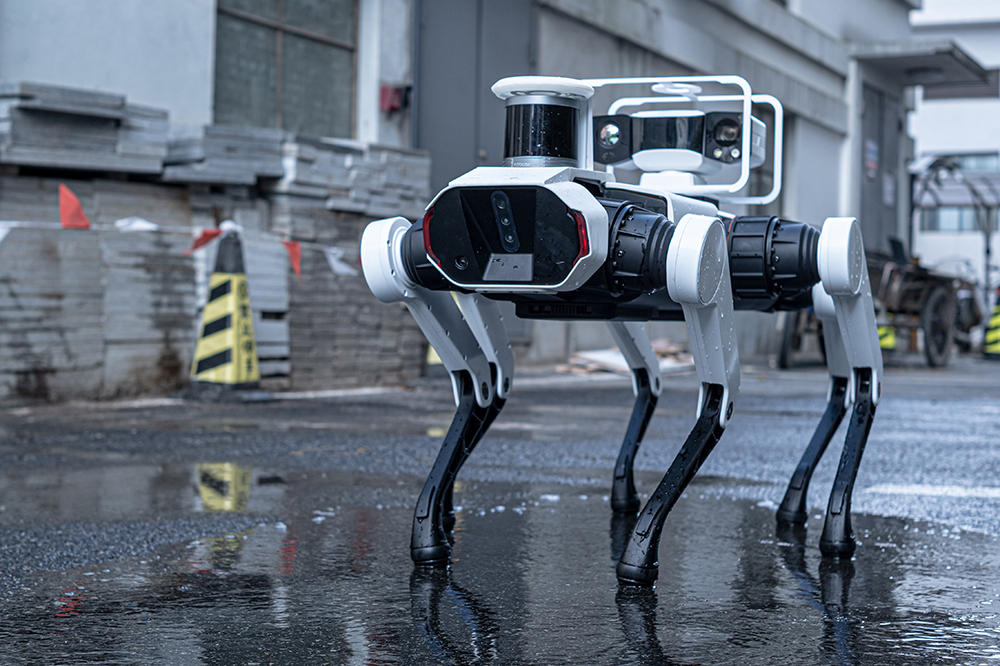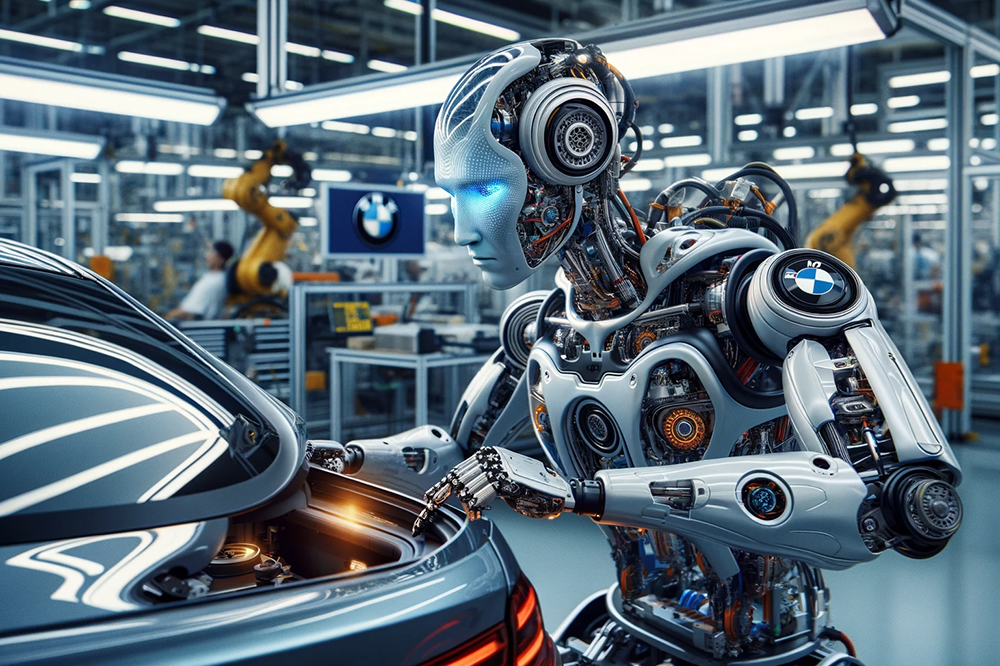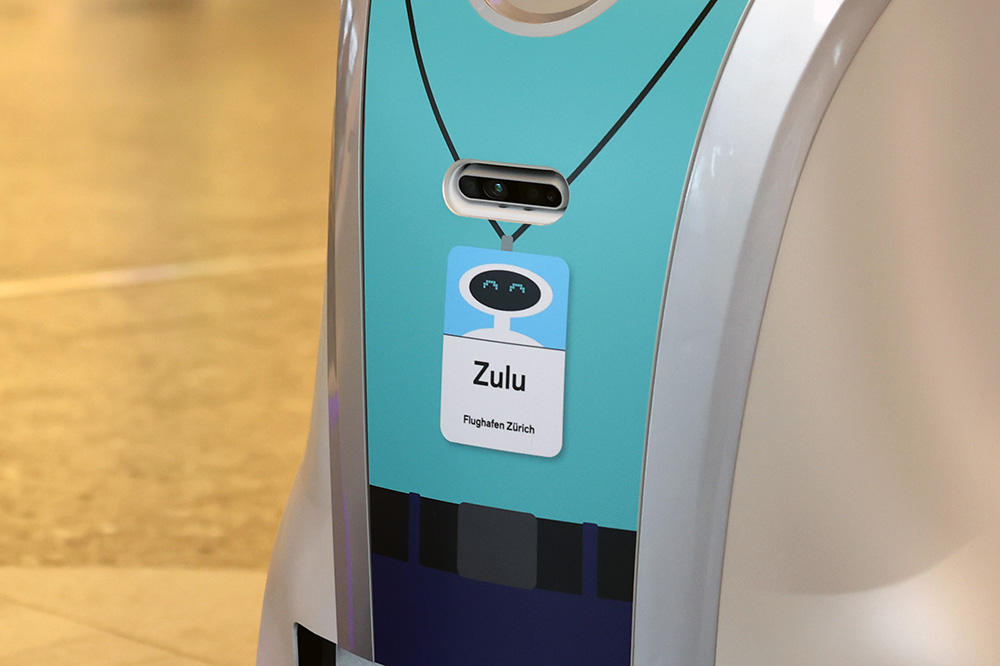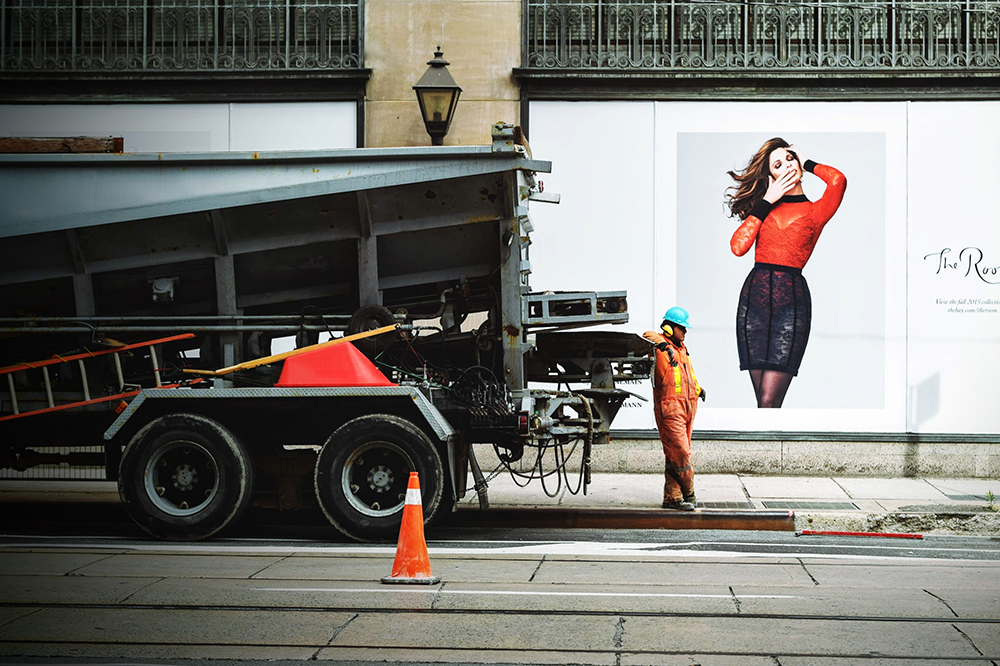September 25, 2024 was the first day of the AI & Robotics4Retail Conference 2024 in Bonn. It was part of the “ECR Day 2024”, which took place at the World Conference Center. Numerous practical presentations provide an insight into the most important AI and robotics topics in retail at the moment and provide important ideas for projects in your own company, according to the website. The keynote speech was given by Prof. Dr. Oliver Bendel on the topic of “Service robots from a technical, economic and ethical perspective”. From the description: “Service robots have become widespread as cleaning, transportation, and security robots. As vacuum and mopping robots, they can be found in households, airports and hotels. As transport robots, they move around factories and warehouses, move between the buffet and kitchen in restaurants or bring orders to customers in cities. In the form of social robots, they advise and serve us in shopping malls or entertain our children while we shop. Universal robots, human-like machines that help in production and logistics in the morning, dig up the garden in the afternoon and play tennis with us in the evening, are just around the corner. They are connected to multimodal language models that enable or improve their control and perception. The talk presents use cases of this kind, classifies them from a technical, economic and ethical perspective, and takes a look into the future.” Further information about www.robotics-konferenz.de.
HeidiBOT as Host of the ESC 2025
The ESC 2025 in Switzerland could be hosted by HeidiBOT, a humanoid robot connected to GPT-4o. The head could be commissioned from Hanson Robotics, RealDoll, or other companies. It would be worth considering whether a Figure 01 or similar model could serve as the basis. This would allow HeidiBOT to move naturally on stage and be part of a performance itself. Using GPT-4o or comparable language models, she would be able to speak a Swiss-German dialect, High German, English, and French. Rhaeto-Romanic should also be audible, as was the case with @llegra, a chatbot for Vallader. Switzerland could thus present itself as a country with a high level of scientific expertise, innovation, and a sense of tradition. Critics will miss the human touch and commitment. But this could be taken over more by the musicians, who are often just caricatures of themselves. They could have their say on stage and talk and discuss with the audience. A human co-host could also absorb this criticism. Another possibility would be to realize HeidiBOT as an avatar or pseudo- or quasi-hologram, similar to the ABBAtare in London. HeidiBOT could – in whatever form – look like Heidi from the booklet “AMERICAN SMILE” by Oliver Bendel. At her side would be a goat, of course. And Peterli, if he’s well-behaved (Image: Ideogram).
ICSR + BioMed 2024
In addition to the ICSR in Odense, which focuses on social robotics and artificial intelligence, there is also the ICSR in Naples this year, which organizes a robot competition. In addition, an ICSR conference focusing on biomedicine and the healthcare sector will take place in Singapore from August 16-18, 2024. The website states: “The 16th International Conference on Social Robotics + BioMed (ICSR + BioMed 2024) focuses on interdisciplinary innovation on Bio-inspired, Biomedical, and Surgical Robotics. By fostering the much-needed merging of these disciplines, together with fast emerging Biotech, the conference aims to ensure the lesson learned from these communities blend to unleash the real potential of robots. … The conference will serve as the scientific, technical, and business platform for fostering collaboration, exploration, and advancement in these cutting-edge fields. It will showcase the latest breakthroughs and methodologies, shaping the future of robotics design and applications across several sectors including Biomedical and healthcare.” (Website ICSR) Papers must be submitted by June 5, 2024. Further information on the conference is available at robicon2024.org.
The Six-legged Robot
Laptop manufacturer Lenovo launched the Lenovo Daystar robot in 2020. The design of the machine, with four wheels and a cobot on the back, was less than convincing. The latest development is different. The website ifdesign.com reports on the award winner: “Step into the forefront of industrial automation and public services with Lenovo Daystar Bot GS. The groundbreaking six-legged design guarantees unmatched stability and maneuverability that surpasses traditional robotic platforms, allowing it to traverse diverse terrains with ease.” (iF DESIGN, 2024) The six legs are indeed unusual and a real eye-catcher. There is disagreement about the advantages. Perhaps the six legs provide more stability on stairs and very uneven terrain. The article continues: “Boasting an advanced control system, cutting-edge perception algorithms, and IP66 robust protection, GS outperforms in unforeseen scenarios, enabling comprehensive data collection at any location and time. In our unwavering pursuit of excellence, GS stands as a testament to innovation, efficiency, safety, and the boundless potential of automated exploration.” (iF DESIGN, 2024) Interestingly, Lenovo itself has nothing to say about the product. However, the media are now reporting intensively. The next few months will bring more clarity about the Lenovo Daystar Bot GS (Image: Lenovo/iF DESIGN).
Figure 01 Goes into Automotive Production
Figure, a California-based company, announced a partnership with BMW Manufacturing in a press release on January 18, 2024, to introduce general-purpose robots like Figure 01. These robots are intended to take on complex, dangerous, or monotonous tasks in automobile production to improve efficiency and safety, and allow employees to focus on more challenging tasks. The implementation will begin at the BMW plant in Spartanburg, South Carolina, after the initial phase of identifying suitable applications. This location also pioneered the use of cobots in automobile production, for example, in the insertion of door seals. Universal robots or general-purpose robots are not yet truly existing, but there are precursors to them. For instance, the Unitree H1 will be available in Germany from February. It is marketed as a general-purpose robot, although it certainly does not meet these requirements. In a similar vein is Elon Musk’s Optimus, which is not even available as a serious prototype yet. The pace-setter in this field is still Boston Dynamics with Atlas. Prof. Dr. Oliver Bendel has been extensively involved with general-purpose robots and gave a presentation on this topic at the Developer Day of the SBB on November 30, 2024 (Image: DALL-E 3).
Zulu and Charlie at Zurich Airport
According to an announcement on December 14, 2023, Zurich Airport is adding Zulu and Charlie to its 300-strong building cleaning team for test purposes. The two service robots are from LionsBot, a Singapore-based company (www.lionsbot.com) and belong to the LEOBOTS. Oliver Bendel writes in the Gabler Wirtschaftslexikon: “Cleaning robots are (partially) autonomous service robots for cleaning surfaces, objects and water sources. They usually have a tangible design and resemble flat cylinders or cuboids. … There are hardly any approaches among the cleaning robots that would turn them into social robots. However, some can communicate with the owners or operators, either by means of text and images on the display or by spoken language.” (own translation) … According to Zurich Airport, Zulu and Charlie can do more than just clean areas. “They can also interact with passengers. If you scan the QR code on the device, you can select questions that the robot will answer.” (Zurich Airport, December 14, 2023) It goes on to say: “Zulu and Charlie have various sensors. These can recognize outlines, but do not create video footage. The test phase of the devices will run until mid-February. The robots are autonomous and will clean the areas on their own after a short initial phase.” (Zurich Airport, December 14, 2023) Further information is available at www.flughafen-zuerich.ch/newsroom/en/flughafen-zuerich-ag-relies-on-robot-support/ (Photo: Zurich Airport).
After the Social Robotics Conference
What can you do in Qatar after a conference on social robotics? So much that you might want to add a few days to your trip. It doesn’t just have to be camel riding, dune bashing, or the inland sea in the south. There is much more to do: 1. walk along the Corniche in Doha Old Town and admire the palm-frond street lamps and the wooden boats. 2. take a cab up the Corniche and marvel at the skyline of West Beach and Jeff Koons’ DUGONG. 3. hire a boat and go out into Doha Bay at night to see the skyscrapers light up and one of the drone fireworks displays. 4. visit the Souq Waqif in Doha Old Down and head to the restaurant Parisa, where you can try the delicious Veg Khorak. 5. visit the National Museum of Qatar and enjoy the light installation by Pipilotti Rist (until 30 April 2024) and lunch or dinner at vegan Thataltheen Café. 6. take a walk in South Hills Park and enjoy the view of the city from the highest point. 7. visit the sustainable inner-city district of Msheireb Downtown Doha and ride the tram. 8. take a chauffeur-driven jeep to the area southeast of Shagra and swim in the Persian Gulf. 9. take another jeep to the northwest of Qatar and admire the Al Zubarah Fort in the evening light. 10. go to B12 Beach Club Doha, the hippest beach club in town, where you can wear your Speedos and Brazilian bikini and enjoy a cocktail or a glass of wine (Photos: DUGONG, Parisa, and skyscrapers: Nihan Karataş; all others: Oliver Bendel).
Disabling Autonomous Vehicles
“Anti-car activists have come up with a novel and effective way of disabling driverless vehicles owned by Waymo and Cruise in San Francisco: placing traffic cones on their hoods. It’s the work of a group called Safe Streets Rebel, which has launched a protest dubbed ‘Week of Cone’.” (Techspot, 11 July 2023) This was reported by Techspot on 11 July 2023. Prof. Dr. Oliver Bendel has been pointing out for several years that automated and autonomous cars can be crippled in a simple way. On 6 March 2018, in an article in a Swiss IT journal, he asked, “Does autonomous driving fail because of manipulated sensors?” … A thesis by his student M. Hashem Birahjakli then systematically compiled and examined methods and means. A blog post about it states: “The results of the work suggest that every 14-year-old girl or boy could disable a self-driving car. So far, hacking has been seen as the greatest threat to autonomous driving. But while not everyone can hack, almost everyone carries chewing gum or lipstick. The automotive industry should consider this threat seriously.” The operator Waymo reacts helplessly to the actions. According to the German magazine Golem, a press spokesman emphasized that the traffic cone action shows a lack of understanding of how autonomous vehicles work and is vandalism. In fact, the activists know very well how autonomous vehicles work. And that is precisely the problem.
Atlas Finally has Hands
“Boston Dynamics just released the latest demo of its humanoid robot, Atlas. The robot could already run and jump over complex terrain thanks to its feet. Now, the robot has hands, per se. These rudimentary grippers give the robot new life. Suddenly, instead of being an agile pack mule, the Atlas becomes something closer to a human, with the ability to pick up and drop off anything it can grab independently.” (TechCrunch, January 18, 2023) This was reported by TechCrunch on January 18, 2023. Hands are actually very important for Atlas. The humanoid robot could now pick up or move heavy objects on a construction site. But it could also take care of trapped or injured animals in a nature park, freeing them or providing them with food and water. Such visions have been described by robot ethicist and machine ethicist Oliver Bendel for some time. A video released on January 18, 2023 shows the grippers picking up construction lumber and a nylon tool bag. “Next, the Atlas picks up a 2×8 and places it between two boxes to form a bridge. The Atlas then picks up a bag of tools and dashes over the bridge and through construction scaffolding. But the tool bag needs to go to the second level of the structure – something Atlas apparently realized and quickly throws the bag a considerable distance.” (TechCrunch, January 18, 2023) At the end of the video, Atlas does a somersault and then extends its hand – its brand new hand – triumphantly.
The Uncanny Robot CyberOne
Xiaomi – a Chinese manufacturer of consumer electronics – introduced CyberOne in August 2022. It is a humanoid social robot. It has a head, but no face, and for that reason alone it looks creepy. The company writes on its website: “As the newest member of Xiaomi’s Cyber series, joining last year’s quadruped robot Cyberdog, CyberOne is fitted with advanced arms and legs, supports bipedal-motion posture balancing, and reaches a peak torque of up to 300Nm. Also demonstrated was the ability to detect human emotion, advanced vision capabilities, and functionality allowing it to create three-dimensional virtual reconstructions of the real world, alongside a host of other advanced technologies.” (Xiaomi, August 11, 2022) Via www.youtube.com/watch?v=CJhneBJIfOk you can watch a video with CyberOne. Overall, the demonstration seems unconvincing. The missing face has already been mentioned. The robot makes sounds that are more appropriate for a small toy and entertainment robot. In addition, it moves stiffly and slowly. You can say that the list of uncanny robots has been expanded with CyberOne. Maybe the company can improve the prototype and make it more compelling.









